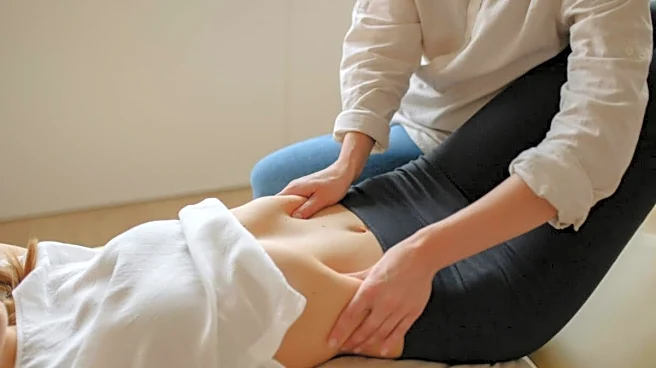Belly massage, or abdominal massage, is gaining popularity as a potential natural remedy to relieve gas and bloating, especially among those who want to alleviate digestive discomfort without
the use of drugs or strict diets. Though initial evidence suggests that it may be helpful, doctors caution that it should not be considered a cure.
Abdominal massage involves the use of light, rhythmic pressure and movement on the stomach with the goal of physically facilitating the passage of gas, stool, and liquids through the intestines. The National Institutes of Health study cites some researchers who suggest the effects on the vagus nerve, which is very important for gut motility and digestive homeostasis.
What the Early Research Shows
Belly massage may help with digestive problems, as several small-scale studies and clinical reviews have shown. A systematic review of randomised controlled trials provides evidence for the positive impact of abdominal massage on gastrointestinal functions in various cases.
In a 2023 meta-analysis of 13 studies with over 800 individuals, abdominal massage was shown to enhance both quality of life and functional constipation symptoms, such as stool frequency and consistency.
Massages reduced the circumference and distension of the abdomen in critically sick individuals.
The clinical trial from 2015 showed that the application of abdominal massages for 15 minutes, twice a day for 3 days, not only lessened the severity of the feeling of bloating but also helped improve the psychological health of participants.
In addition to relaxing abdominal muscles and possibly triggering the parasympathetic “rest and digest” response, abdominal massage is believed to encourage peristalsis, the muscular contractions that move contents forward.
Regular abdominal massage has been shown in other studies to reduce bloating, soften stool, and increase the frequency of defecation in older persons and those with persistent constipation—often within 4–5 weeks of consistent practice.
How Does Belly or Abdominal Massage Work
Experts propose several mechanisms by which belly massage could relieve bloating:
- Encouraging intestinal motility: Applying regular, rhythmic pressure to the abdomen may facilitate the passage of stool and gas through the intestines.
- Relaxation response: The parasympathetic (or “rest and digest”) nervous system may be triggered by lightly touching the abdomen, which may aid in relaxing the muscles involved in digestion.
- Vagus nerve stimulation: According to certain research, massage may indirectly activate the vagus nerve, which is crucial for controlling digestion.
Although there are many different massage techniques, common ones include clockwise strokes, “I-L-U” patterns that resemble the colon’s journey, and light kneading. Sessions can be repeated daily or several times a week, and they can last anywhere from 5 to 15 minutes.
Safety, Limitations, and Expert Caveats
Multiple studies are brief, use a variety of massage techniques, and vary in terms of frequency and length. High-quality trials specifically focused on bloating are limited, and the best research is still on constipation rather than separate gas or bloating.
Belly or abdominal massage, according to experts, might be a helpful supplement rather than a stand-alone treatment for gas or bloating. However, people who have recently undergone abdominal surgery, have acute pain, or have specific digestive diseases are advised to exercise caution; consult your physician before beginning.










/images/ppid_a911dc6a-image-176386562952647585.webp)

/images/ppid_a911dc6a-image-176380973132822082.webp)
